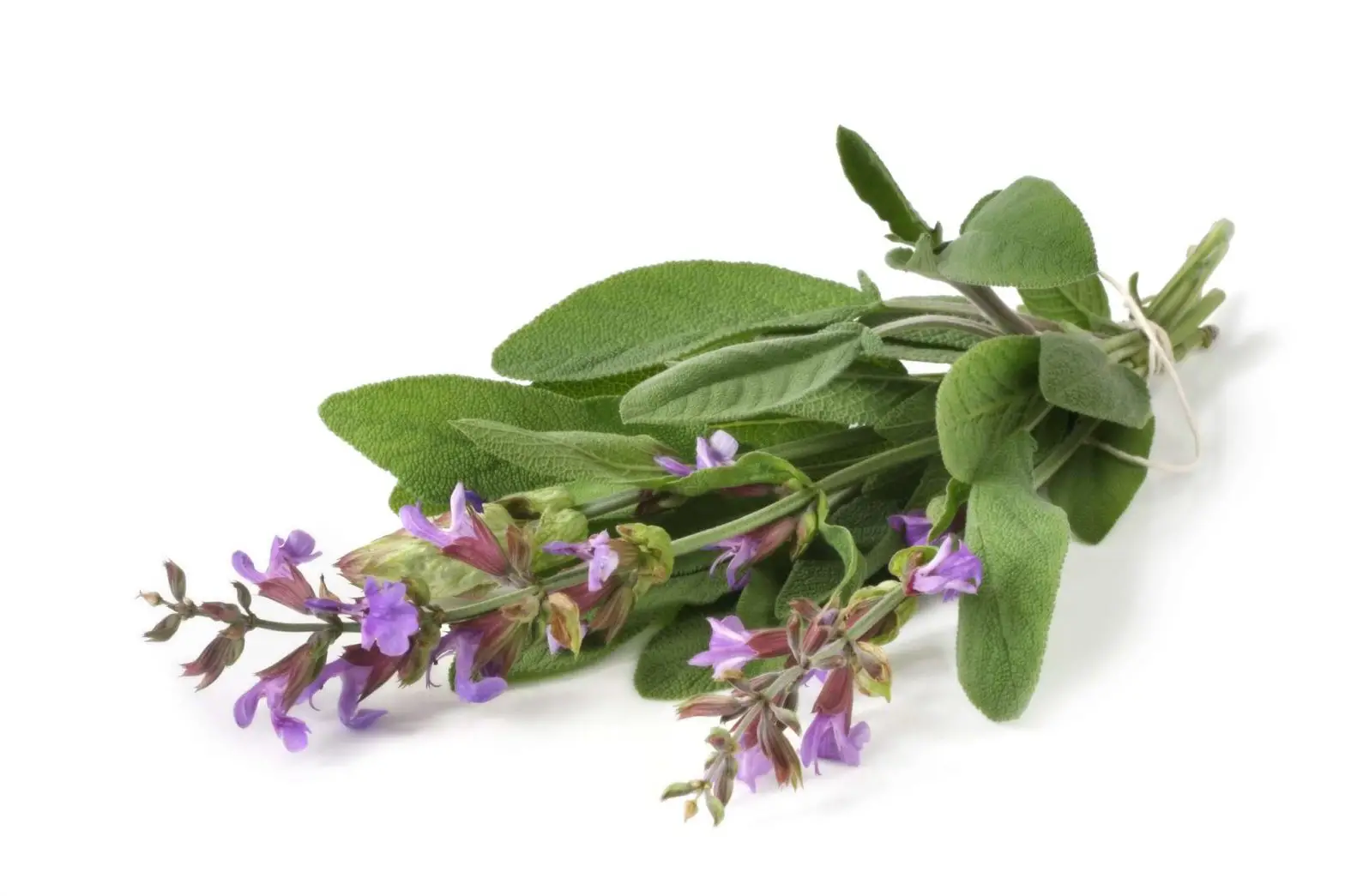Sage, a member of the mint family, is an intense and savory herbal fragrance note that adds an earthy and grassy element to perfumes.
Sage has a vibrant green, moderately sweet smell with a pronounced floral nature and a subtle tea-like character. Its scent is complemented by a hint of warm amber, an enduring tobacco feel, and a faint minty undertone.
When derived naturally, the scent of sage adds a peppery kick to perfumes. It comes from the concrète, absolute, or essential oil of clary sage, the steam-distilled extractions from the above-ground parts of the sage plant that carry a varying concentration of its aromatics.
Just like the plant, sage oil is so astringent that, as soon as you get a whiff of it, it wakes you up makes your nose itch. Fresh and lively—yet mature and complex—it reminds you of the scent your clothes would pick up after having run and played in the grass as a kid.
The main chemical component that makes up the scent of sage is called linalyl acetate, a phytochemical that you will also sense when smelling bergamot and lavender. Sage’s amberness comes from sclareol.
Scent-wise, sage pairs well with bergamot, neroli, jasmine, lavender, cedarwood, and sandalwood.
Sage is the common name for Salvia officinalis, a perennial, evergreen shrub that’s native to the Mediterranean coast of Southern Europe. There are many varieties of sage, but it can generally be described as a herb with woody stems, grayish leaves, and purplish flowers.
Today, sage is commercially grown in North America, China, India, Caucasus, Ukraine, Bulgaria, Romania, Hungary, Italy, France, and Morocco.
Sage’s botanical name, Salvia officinalis, originates from the Latin word salver, which means “to heal.” First described by Swedish botanist Carl Linnaeus in 1753, the herb is known to have been prescribed as herbal medicine by the Greeks, Romans, and throughout the Middle Ages.
Since ancient times, sage was used for smudging (the ritual of warding off evil), treating snakebites, and bolstering women’s fertility. The Romans used it as a diuretic, as well as a local anesthetic for the skin.
In the culinary world, sage is a staple spice in the cuisines of the Mediterranean people—and has even made its way to present-day American cuisine as a must-add herb for stuffed Thanksgiving turkey.

